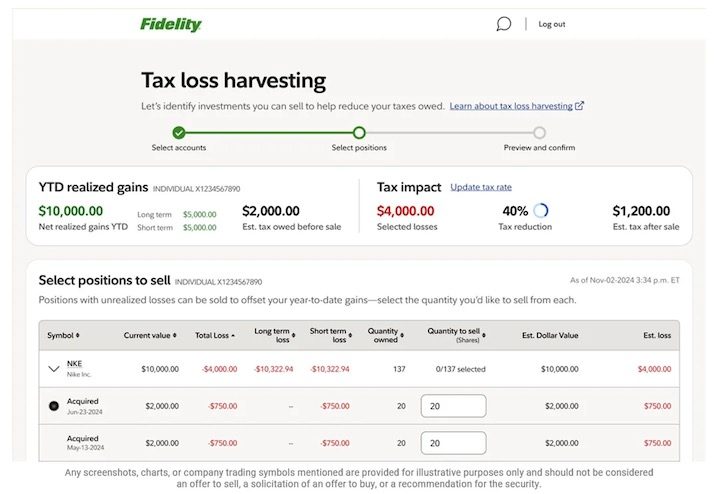Key Takeaways
- Understanding Salary Guides: A salary guide is a comprehensive resource that outlines compensation ranges for specific roles across industries, aiding both job seekers and employers in making informed decisions.
- Empowering Job Seekers: Salary guides help job seekers understand their market value, enabling confident salary negotiations and informed discussions during interviews.
- Supporting Employers: Employers can use salary guides to create competitive compensation packages, streamlining recruitment processes and enhancing employee retention by aligning pay with industry standards.
- Key Components: Effective salary guides include job titles and descriptions, salary ranges, and geographic considerations, which are crucial for accurate compensation planning.
- Strategic Application: Utilizing salary guides involves establishing a clear compensation philosophy, choosing reliable guides, and regularly monitoring market trends to adjust salary packages accordingly.
Navigating the job market can feel overwhelming, especially when it comes to understanding salaries. Whether you’re entering the workforce, considering a career change, or negotiating your current pay, having a solid grasp of salary expectations is crucial. A well-researched salary guide can empower you to make informed decisions and advocate for your worth.
[embed]https://www.youtube.com/watch?v=loYuxWSsLNc[/embed]
In today’s competitive landscape, knowing what others in your field earn can give you a significant edge. You’ll not only gain insights into industry standards but also understand how factors like location, experience, and skills can influence your earning potential.
This guide is designed to equip you with the knowledge you need to confidently approach salary discussions and secure the compensation you deserve.
What Is a Salary Guide?
A salary guide is a comprehensive resource that outlines current compensation ranges for specific positions within various industries. For small businesses, utilizing a salary guide aids in aligning competitive pay with industry standards, helping attract and retain top talent.
Salary guides typically include information on factors that influence compensation, such as location, industry trends, and skill sets. They provide insights into average salaries for full-time employees, part-time employees, and temporary staff, ensuring your staffing solutions align with the job market. Understanding these benchmarks assists in building an effective recruitment strategy by informing your hiring process.
Using a salary guide also streamlines employee management.
It allows you to develop fair job descriptions that match the responsibilities and qualifications expected, fostering a positive workplace culture. Transparency in compensation not only enhances employee satisfaction but also contributes to employee retention and motivation.
For new hires, a salary guide serves as a foundational tool during onboarding and training. It empowers your HR team to communicate clear payroll expectations and benefits, establishing trust from the start. Incorporating this guide into your recruitment process can significantly enhance your talent acquisition efforts by attracting strong candidates who seek competitive compensation.
A salary guide provides essential information that supports your business’s staffing requirements and helps maintain compliance with labor laws.
Leveraging this tool strengthens your position in the market, boosts employee engagement, and promotes a thriving workforce.
Importance of a Salary Guide
A salary guide plays a vital role in the job market, offering essential insights for both job seekers and employers. This guide equips you with current compensation data across various industries, ensuring informed decisions during hiring and recruitment processes.
Benefits for Job Seekers
- Salary guides empower job seekers by revealing their market value. Knowing the compensation range for specific roles helps you negotiate starting salaries confidently.
- Salary guides enhance your understanding of hiring trends. They provide data on what competitive pay looks like, making the job search more strategic.
- Salary guides elevate your confidence during interviews.
When you’re informed about industry standards, you can articulate your value, fostering productive discussions with potential employers.
Benefits for Employers
- Salary guides assist employers in creating competitive compensation packages. Aligning pay with industry standards attracts and retains top talent within your small business.
- Salary guides streamline the recruitment process by defining clear job descriptions. Understanding market compensation allows for effective workforce planning and minimizes staff turnover.
- Salary guides enhance employee management. By providing accurate payroll data, they facilitate fair pay practices and compliance with labor laws, promoting workplace culture and employee satisfaction.
- Salary guides support effective employee development strategies.
When you offer competitive salaries, you motivate employees, increasing engagement and driving performance.
Utilizing a salary guide strengthens your small business’s position in the job market, ensuring you attract the best candidates while maintaining fairness and transparency in compensation.
Key Components of a Salary Guide
A salary guide contains essential information for effective small business staffing and employee management. Understanding its key components helps streamline your recruitment process and enhances workforce planning.
Job Titles and Descriptions
Job titles and descriptions serve as the foundation of your salary guide. Conduct thorough job analyses to document roles, activities, and responsibilities specific to your business. Create detailed job descriptions that outline required skills and qualifications for each position.
Clear descriptions help attract the right job candidates and ensure that your job postings match the expertise you seek. Accurate titles and descriptions foster a clear understanding of employee roles, improving your hiring strategy.
Salary Ranges and Medians
Salary ranges and medians provide a framework for competitive compensation. Establish pay grades by grouping positions with similar responsibilities. Each pay grade should include a minimum, midpoint, and maximum salary level.
Use market data to ensure salaries reflect current hiring trends, helping you remain competitive within your industry. This approach supports employee retention and satisfaction by ensuring fair pay. Knowing salary ranges aids in creating attractive and equitable compensation packages for both full-time employees and temporary staff.
Geographic Considerations
Geographic considerations play a vital role in determining compensation levels. Locations impact labor costs and salary expectations, so adjust your salary guide based on regional market trends and local economic conditions.
Consider factors such as cost of living, workforce diversity, and industry competition in your area. Ensuring salaries align with local expectations enhances your business’s ability to attract a rich talent pool while facilitating effective team building and employee engagement. By acknowledging geographical variations, you reinforce a workplace culture that values both fairness and transparency.
How to Use a Salary Guide Effectively
Using a salary guide effectively involves several key steps.
Determine Your Compensation Philosophy
Establish your organization’s compensation philosophy before diving into a salary guide. Decide whether your approach will be to lead, match, or lag behind the market in salaries.
This decision influences all future compensation choices and helps attract and retain top talent in your small business.
[embed]https://www.youtube.com/watch?v=HW6Yaj0z-VM[/embed]
Choose a Reliable Salary Guide
Select a salary guide that meets your needs. Look for guides that are reliable, up-to-date, and relevant to your industry and location. Popular choices include guides from Robert Half and Randstad, as they provide comprehensive data on salary ranges. Focus on guides that consider experience, education, and location to make informed hiring decisions.
Identify Relevant Positions
Use the salary guide to pinpoint the positions relevant to your staffing requirements.
Review the corresponding salary ranges and adjust them based on your business needs. Most guides allow you to search by position, industry, and location, making it easier to align your job postings with market standards.
Incorporate Data into Recruitment Strategies
Incorporate salary data into your recruitment process. Use the information to build an appealing compensation package that attracts job candidates. Highlight competitive salaries and benefits during the hiring process.
Communicate these clearly in job descriptions and on your website to engage potential hires.
Monitor and Adjust Regularly
Regularly revisit your salary guide to ensure your compensation packages reflect current market trends. Adjust salaries in response to changes in the job market or employee turnover. This proactive approach enhances employee satisfaction and supports workforce planning.
By following these steps, you’ll strengthen your small business’s position in the job market, fostering a culture of fairness and transparency in compensation.
Conclusion
Navigating the job market can be daunting but having a salary guide at your disposal makes it easier. By understanding compensation trends and industry standards you empower yourself to negotiate effectively and advocate for your worth.
For employers it’s equally beneficial as it helps create competitive compensation packages that attract top talent.
Regularly updating your salary guide ensures you stay aligned with market changes fostering fairness and transparency in your organization.
Investing time in utilizing a salary guide not only enhances your hiring strategy but also contributes to a positive workplace culture. Embrace this tool to elevate your career or strengthen your business’s position in the competitive job landscape.
Frequently Asked Questions
What is a salary guide?
A salary guide is a comprehensive resource that outlines current compensation ranges for specific positions across various industries. It helps employers and job seekers understand market trends, salary expectations, and the factors influencing earnings such as location and experience.
Why is understanding salary expectations important?
Understanding salary expectations is crucial for both job seekers and employers. It ensures that candidates advocate for fair pay and enables businesses to create competitive compensation packages, attracting and retaining top talent while promoting employee satisfaction.
How can a salary guide benefit job seekers?
For job seekers, a salary guide reveals the market value for their skills and experience, helping them make informed decisions during salary negotiations and enhancing their confidence during interviews.
How does a salary guide assist employers?
A salary guide helps employers align their compensation packages with industry standards, streamline recruitment, enhance employee management, and support effective employee development strategies, fostering a positive workplace culture.
What key components should be included in a salary guide?
Key components of a salary guide include job titles and descriptions, salary ranges and medians, and geographic considerations.
These elements help define roles, establish competitive pay, and adjust compensation based on local market trends.
[embed]https://www.youtube.com/watch?v=WV6X0rol5To[/embed]
What steps can organizations take to use a salary guide effectively?
Organizations should determine their compensation philosophy, select a relevant salary guide, identify positions, incorporate salary data into recruitment strategies, and regularly monitor their compensation packages to ensure alignment with current market trends.
Image Via Envato
Disclaimer: This story is auto-aggregated by a computer program and has not been created or edited by finopulse.
Publisher: Source link








